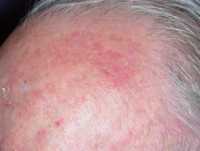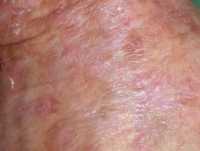
13 Mar Actinic Keratosis: What is the Best Treatment for Pre-Skin Cancers?
MedicalResearch.com Interview with:
Maud Jansen, MD | Resident Dermatology | PhD candidate
Dermatologie, Maastricht
MedicalResearch.com: What is the background for this study? What are the main findings?
Response: Actinic keratosis is the most frequent premalignant skin disease in the white population and is caused by exposure to ultraviolet radiation. With a prevalence of 37.5% among whites 50 years of age or older, actinic keratosis is one of the most frequent reasons for patients to visit a dermatologist. If left untreated, actinic keratosis may develop into squamous cell carcinoma.
Current guidelines provide no clear recommendations about which treatment approach is preferred. Currently, the choice of treatment often depends on the preferences of patients and their treating physicians. Evidence from randomized trials with direct comparison between treatments and with long-term follow-up is scarce.
Frequently prescribed and studied field-directed treatment approaches are 5-fluorouracil cream, imiquimod cream, photodynamic therapy (PDT), and ingenol mebutate gel.
We investigated the effectiveness of these four frequently used field-directed treatments (for multiple lesions in a continuous area). Over 600 patients in four different hospitals (Maastricht UMC+, Zuyderland (Heerlen), VieCuri (Venlo and Venray) en Catharina (Eindhoven)participated in the study. Patients were randomly assigned to one of the four treatments.
The main result of our study was that we found that after 12 months of follow-up, 5% fluorouracil cream was the most effective treatment in the treatment of patients with multiple actinic keratosis lesions. Moreover, patient satisfaction and increase in health-related quality of life were highest in the 5-fluorouracil group.
MedicalResearch.com: What should readers take away from your report?
Response: Our study showed that 5-fluorouracil is the most effective treatment for multiple actinic keratosis. Moreover, it is the cheapest treatment and highly regarded by patients. Our study can make an important contribution to establishing (inter)national treatment guidelines for actinic keratosis. The use of 5-fluorouracil cream as standard therapy for actinic keratosis could also result in in health care cost savings per year.
MedicalResearch.com: What recommendations do you have for future research as a result of this work?
Response: It is of future interest to evaluate the patients a longer period of follow-up and analyse the number of SCC developed in the treatment area.
MedicalResearch.com: Is there anything else you would like to add?
Response: This study was funded by a grant (80-83600-98-3054) from the Netherlands Organization for Health Research and Development (ZonMw), a governmental institution that finances research to improve health care in the Netherlands.
Citation:
Randomized Trial of Four Treatment Approaches for Actinic Keratosis
Maud H.E. Jansen, M.D., Janneke P.H.M. Kessels, M.D., Ph.D., Patty J. Nelemans, M.D., Ph.D., Nina Kouloubis, M.D., Aimee H.M.M. Arits, M.D., Ph.D., Han P.A. van Pelt, M.D., Ph.D., Patricia J.F. Quaedvlieg, M.D., Ph.D., Brigitte A.B. Essers, Ph.D., Peter M. Steijlen, M.D., Ph.D., Nicole W.J. Kelleners-Smeets, M.D., Ph.D., and Klara Mosterd, M.D., Ph.D
March 7, 2019
N Engl J Med 2019; 380:935-946
DOI: 10.1056/NEJMoa1811850
[wysija_form id=”3″]
[last-modified]
The information on MedicalResearch.com is provided for educational purposes only, and is in no way intended to diagnose, cure, or treat any medical or other condition. Always seek the advice of your physician or other qualified health and ask your doctor any questions you may have regarding a medical condition. In addition to all other limitations and disclaimers in this agreement, service provider and its third party providers disclaim any liability or loss in connection with the content provided on this website.
Last Updated on March 13, 2019 by Marie Benz MD FAAD

